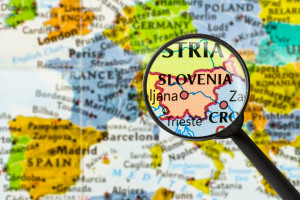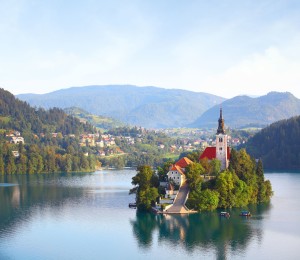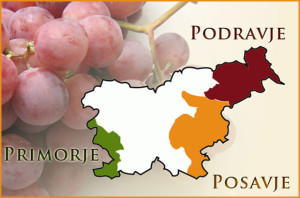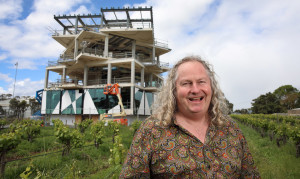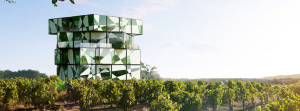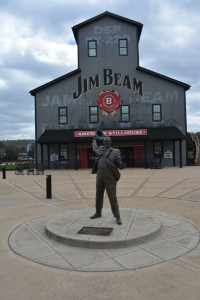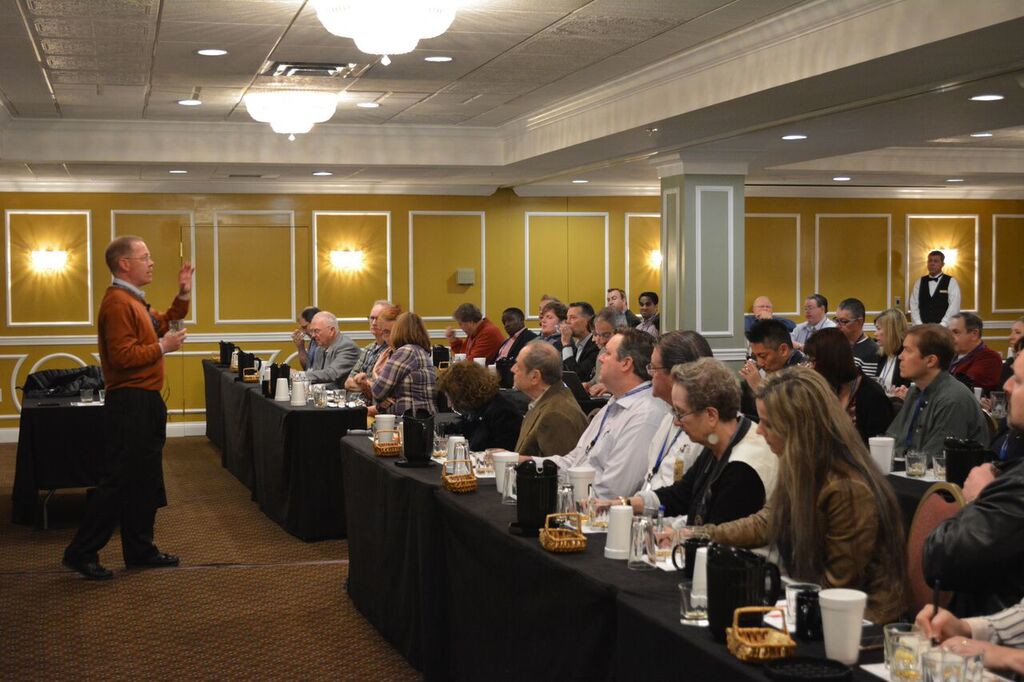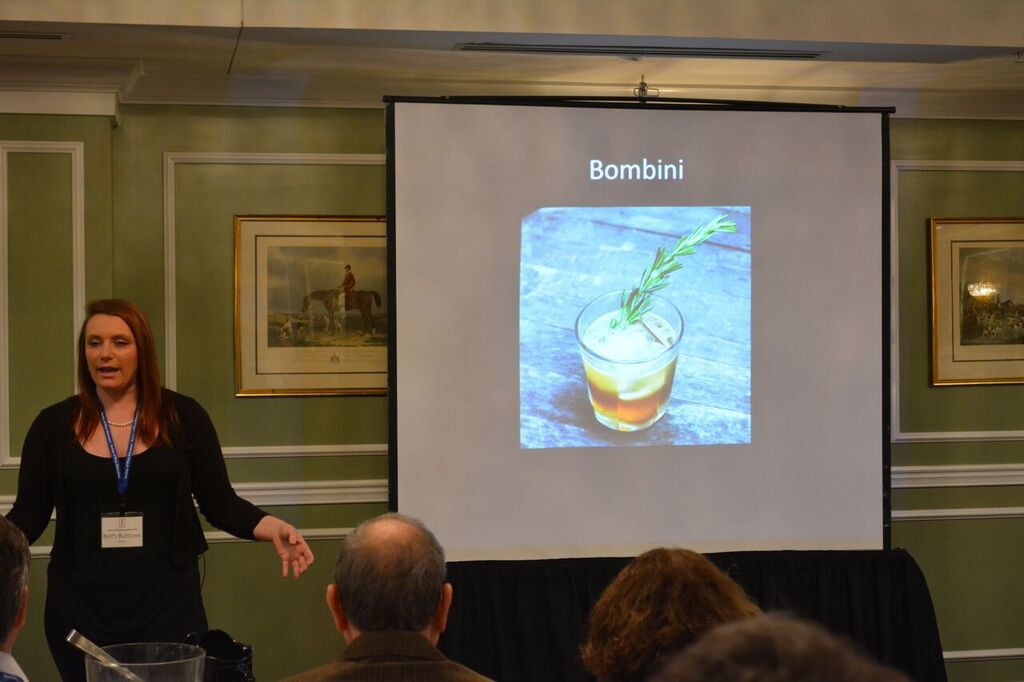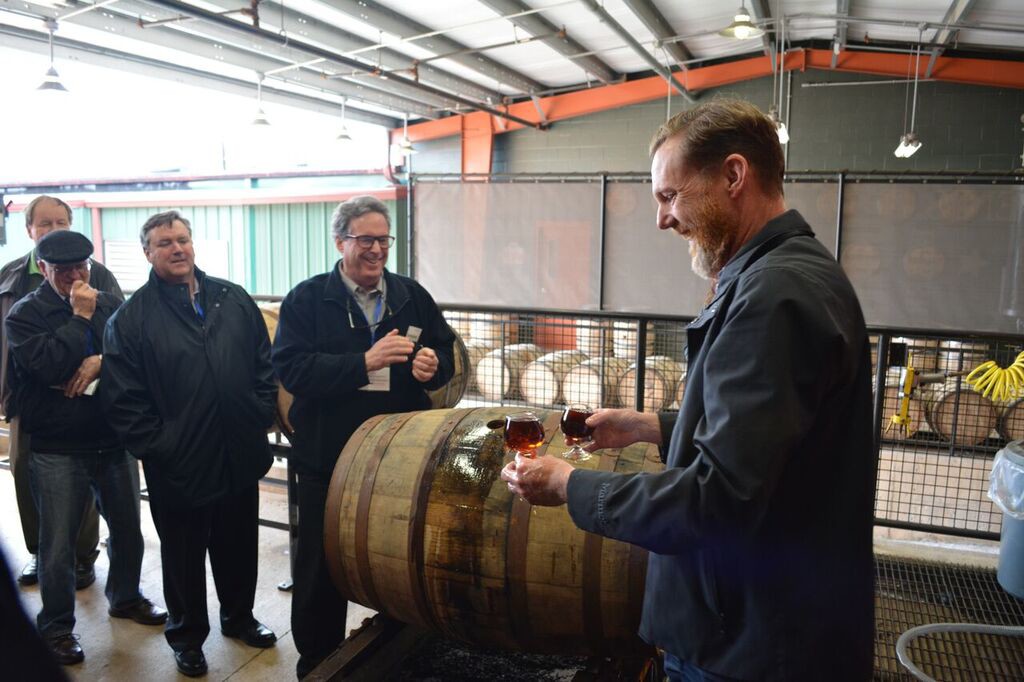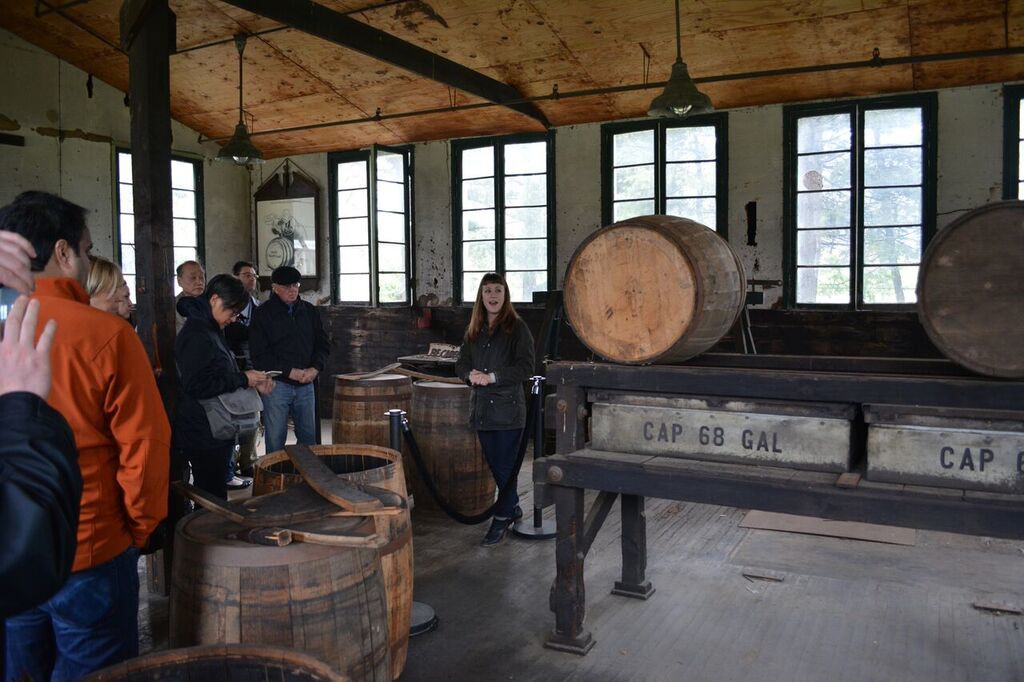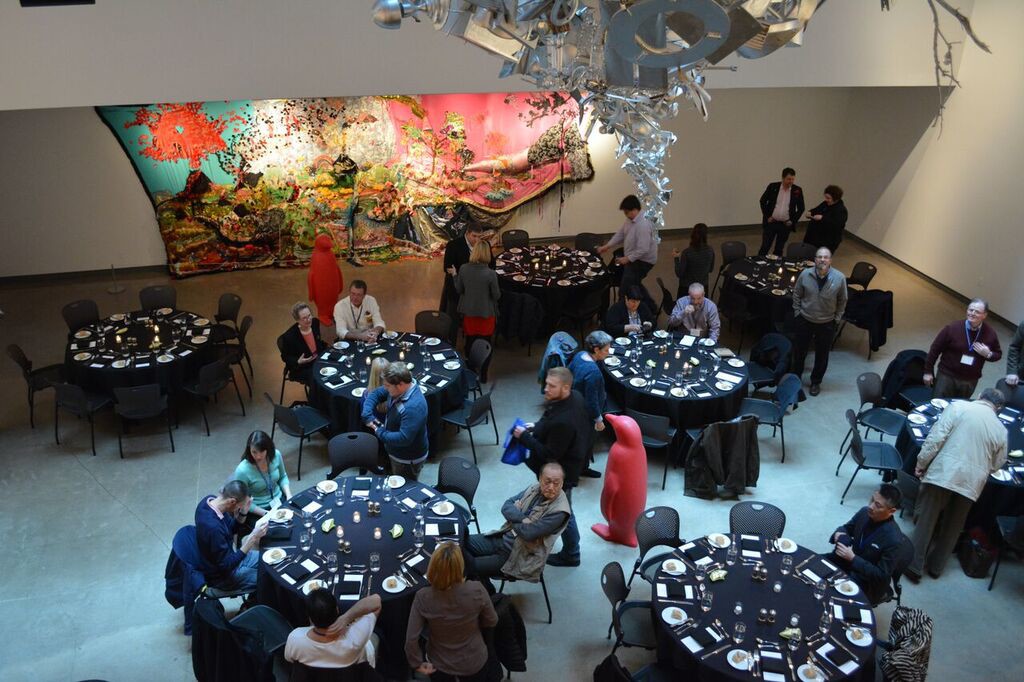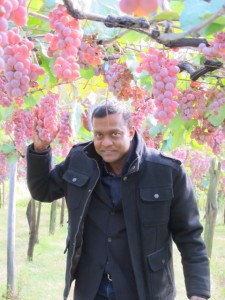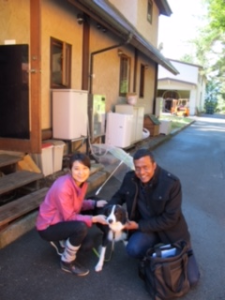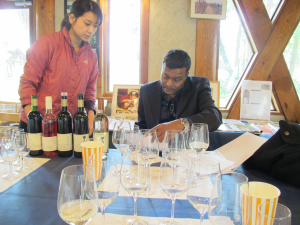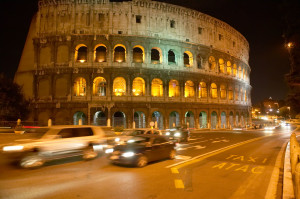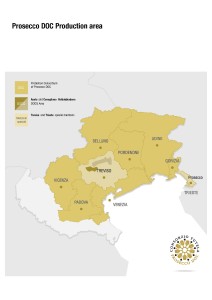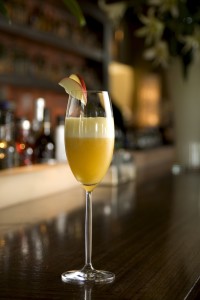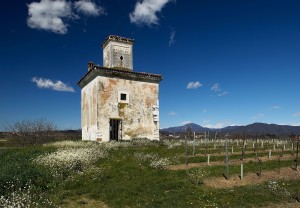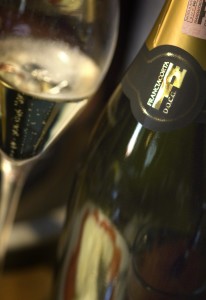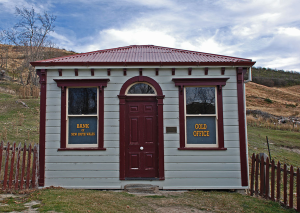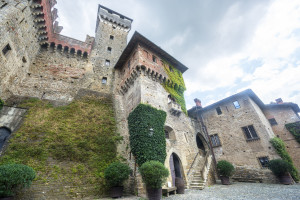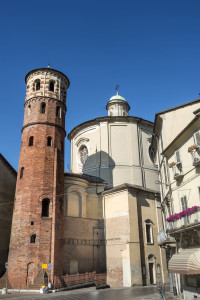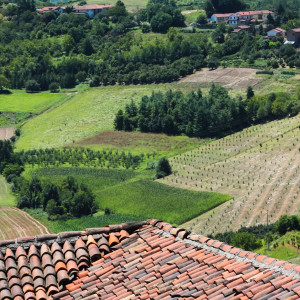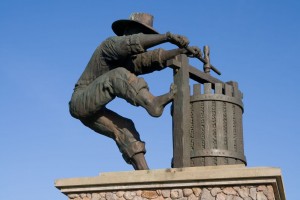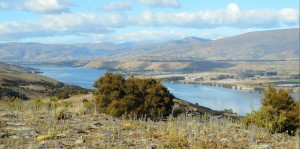
View from Bendigo over Lake Dunstan towards Lowburn
Today we have a guest post from Lucia Volk, CWE. Lucia tells us about her recent trip to Central Otago where she found a range of world-class Pinot Noir, Riesling, and Sauvignon Blanc behind the local cellar doors!
If you ever have an opportunity to go visit the southernmost wine region in the world, jump on it! The first reason is that it happens to be on New Zealand’s South Island, where it is impossible to put the camera down, with all the snow-capped mountains, azure-colored glacial lakes, as-wide-as-the-eye-can-see flocks of sheep feeding on fresh grass and wildflowers, and wild, rugged coastlines populated with seals, penguins, and a fantastic array of birds. Rippon on Lake Wanaka in Otago is alleged to be the most photographed winery on earth. No matter where you look, you are likely to utter some version of OMG!
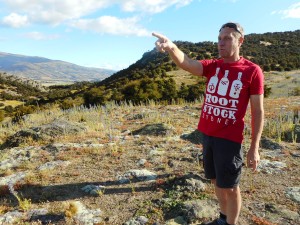
Rudi Bauer pointing out different subregions around Lake Dunstan
Central Otago is the only wine region in New Zealand with a (semi)continental climate, benefitting from the rain shadow of the Southern Alps and the dry Maniototo Plain, an extension of the Mackenzie Region, to the east. Of course, New Zealand is a relatively narrow island surrounded by ocean, which keeps the climate overall cool. Since Jancis Robinson famously wrote in the 2001 edition of the World Atlas of Wine that “many believe this is where the Pinot grail is to be found,” Central Otago has generated a significant amount of buzz. This brings me to the second reason for going: it is a worthy quest!
Otago is one of sixteen administrative regions of New Zealand, with a population of roughly 230,000. Central Otago is home to Queenstown and Wanaka, picture-perfect lake towns that draw increasing numbers of tourists. Their bustle and noise, as well as steadily rising home prices, have sent old-time Otago residents to calmer places such as Cromwell and Bannockburn. These two towns are at the heart of the Central Otago’s wine region, which is most usefully imagined as a triangle containing nine non-contiguous subregions of various sizes within. The triangle begins east of Queenstown/Lake Wakatipu with the oldest and highest subregion Gibbston (first commercial release of wine in 1987). The imaginary line goes northeast to the town of Wanaka with the subregion Wanaka by the eponymous lake, and the lesser-known area of Queensberry to the east. Continuing the imaginary line to the southeast to the towns of Clyde and Alexandra, the subregion called Alexandra boasts both the hottest and coldest temperatures of the entire region. If you complete the triangle by connecting Alexandra to Queenstown, and then look for the triangle’s center, you find Lake Dunstan, bordered by the subregions of Bannockburn, Cromwell and Lowburn at the southern shores, Pisa to the east, and Bendigo, with its own subregion Tarras, to the west. (Tarras obtained world fame when Shrek, The Hermit Sheep was discovered nearby!)
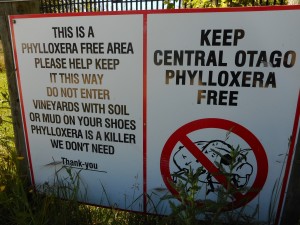
Sign at the entrance of Rippon winery, whose vineyards remain phylloxera-free
Each of these subregions features different altitudes, soil types, sun exposure, and rainfall. The wine map for Central Otago is, in other words, a quilt with many patches of different fabrics and colors. As my diligent tasting efforts revealed, the star grape Pinot Noir—75% of Central Otago plantings–can develop a wide array of aromas and flavors on different sites, and so can Riesling, Pinot Gris, Chardonnay, Sauvignon Blanc, Grüner Veltliner or Gewürztraminer. Once you drive yourself from one (side of the) lake to the next, you are able to appreciate the many differences that affect what ends up in the bottle. It is much more fun to do it on site than to read about it online.
Most of the region’s 175 vineyards are family-owned, with an average size of about 10 ha [24 acres]. But big money in the form of foreign investment is beginning to reach Central Otago. Foley Family Wines recently bought one of the flagship wineries, Mt. Difficulty, in Bannockburn for NZ$55 million (about US$38 million). While it is too early to tell what impact this sale will have on the region—it certainly sent a jolt through the wine community—winemakers I spoke to hope that it will bring new ideas that can benefit everyone in this tight-knit community.
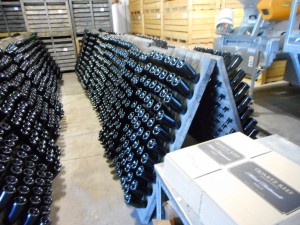
Bottles waiting to be riddled at Quartz Reef
For instance, Rudi Bauer of Quartz Reef—please try his unbelievably affordable and delicious hand-crafted Méthode Traditionelle Brut—believes that Central Otago has yet to reach its fullest potential. Standing in his vineyard in Bendigo situated on NZ’s largest quartz deposit, he proudly pointed out the region’s significant accomplishments in producing premium wines in only 30 short years. In the 1980s, nobody expected vineyards to survive the annual frosts. Dr. Stuart Elms decided to plant Pinot Noir near the Kawarau River on Felton Road in Bannockburn in 1992, when nobody else believed his grapes would ripen. At that time, it was difficult to obtain vines to plant, and nobody understood the soils well enough to know what should go where. Currently, as older vineyards come up for replanting on Felton Road, new varieties replace the old in light of new soil insights. Felton Road produces award-winning Pinot Noir, which you should definitely try, as well as their bracing Riesling and intense Chardonnay.
Bauer started his Bendigo vineyard venture four years after Dr. Elms started his, in 1996. He was one of the first to plant on a hillside rather than alluvial flats near the lake, helping him keep frost damage under control (colder air seeks lower elevation). Much of the accumulating vineyard knowledge is shared among the region’s winemakers. One lovely example of winery collaboration is the 4 Barrels Walking Wine trail of four Cromwell-based wineries, the Wooing Tree, Misha’s, Aurum, and Scott Base.
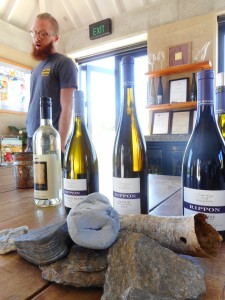
Wine Tasting at Rippon
As is true of the rest of the country, the vast majority of Central Otago wineries operate under independently audited sustainability programs; Felton Road, Rippon, and Quartz Reef are Demeter certified Biodynamic. Winemakers in Central Otago are hardworking visionaries, committed to careful winemaking under challenging conditions. You want to meet them in person, which is why you need to book your ticket and go.
I recommend going to New Zealand in January, because it is summer there—basking in balmy temperatures beats unpacking your woolens every time! Daytime temperatures of 85°F and days that start at 6am and extend well after 9pm are great for foreign visitors, as they are for maturing grape clusters. Diurnal temperature changes ensure the acid remains high in the grapes. Sun exposure is intense, something Jancis Robinson in the most recent World Atlas of Wine credits to a hole in the ozone layer, leading to thick-skinned grapes and bright fruit flavors. Careful canopy management requires that grape clusters are exposed enough to ripen yet still covered up, so they do not suffer sunburn. Visitors must bring hats and sunscreen!
The lakes near Central Otago’s vineyards are plentiful sources of irrigation–needed for most of the fast-draining, sandy soils–and they are also perfect for water sports. In the cold Otago winters and early spring, when temperatures plummet, some of that lake water is also used via secondary sprinkler systems, to provide protection against frost, esp. at or after bud break. Someone figured out that vines encased in frozen water retain enough heat to survive freezing ambient temperatures! Other frost-fighting options available to wine-makers are helicopters (expensive!), wind machines, and frost pots. Gusty winds can be another challenge of nature, and can be met with careful trellis support. Unlike Marlborough, where nearly all vineyard labor is done by machines, you regularly find vineyard crews—hired seasonally from Vanuatu and Fiji—in Central Otago.
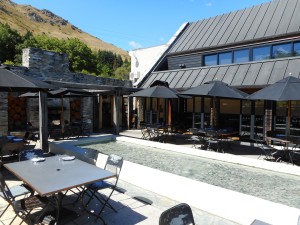
Amisfield Bistro & Cellar Door near Queenstown
Visitors can enjoy easy access to tasting rooms, or “cellar doors” as they are locally called, during the main tourist season. Many wineries offer tasty lunch options in addition to flights of their wines. Amisfield, which owns an estate in the Pisa subregion, had the brilliant idea of building a tasting facility and high-end bistro in Gibbston, right next to tourism mecca Queenstown, where they now serve over 50,000 visitors a year.
This brings me to a last point, which is the availability of restaurants and accommodation in Central Otago, where visitors might want to linger: Queenstown and Wanaka are filled to the brim with options, while Cromwell and Bannockburn still lack a similar infrastructure. The latter results in mostly day-trip-tourism from Queenstown or Wanaka—and only during the warm summer months.
But back to Rudi Bauer’s earlier point: Central Otago is still a young wine region. It is also super-dynamic, and there is no telling what it will look like in five or ten years. Based on the talent and passion already at work, it is reasonable to expect more and greater things.
Suggested further reading:
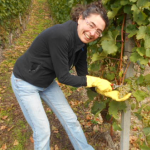 Lucia Volk, CWE, runs MindfulVine, a Wine Education business in the Bay Area that specializes in tailored, at-home tastings to promote a greater enjoyment of wine. She grew up in Germany, where her grandfather started a Riesling winery. She knows what it takes to work those steep slate slopes by hand, and decided to start promoting Riesling and other European wines after obtaining a PhD in Anthropology in the United States, and working briefly in wine sales.
Lucia Volk, CWE, runs MindfulVine, a Wine Education business in the Bay Area that specializes in tailored, at-home tastings to promote a greater enjoyment of wine. She grew up in Germany, where her grandfather started a Riesling winery. She knows what it takes to work those steep slate slopes by hand, and decided to start promoting Riesling and other European wines after obtaining a PhD in Anthropology in the United States, and working briefly in wine sales.
She now gets to have the best of two worlds and teach about global politics and cultures, as well as the many wonderful wine regions across Europe. She is also working–slowly–on a book about the lesser known German Anbaugebiete.
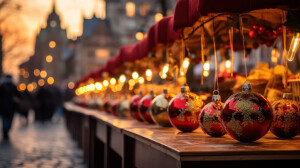 Strolling through a German Christmas Market—such as Nuremberg’s Christkindelsmarkt—with a glass of steaming Glühwein warming up your hands is a dream come true (or a fantasy yet to be fulfilled) for lovers of Christmas, European travel, and cold winter nights. Glühwein—the name actually means glow wine, noting the warm glow one should feel along with the first sip—is a big part of the German Christmas Market experience.
Strolling through a German Christmas Market—such as Nuremberg’s Christkindelsmarkt—with a glass of steaming Glühwein warming up your hands is a dream come true (or a fantasy yet to be fulfilled) for lovers of Christmas, European travel, and cold winter nights. Glühwein—the name actually means glow wine, noting the warm glow one should feel along with the first sip—is a big part of the German Christmas Market experience.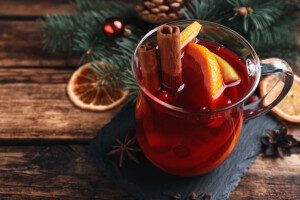 If you’d like to try and create your own home-kitchen version of Glühwein, try riffing on this formula (or follow one of the more formal recipes linked to the bottom of this post):
If you’d like to try and create your own home-kitchen version of Glühwein, try riffing on this formula (or follow one of the more formal recipes linked to the bottom of this post):





 Lucia Volk, CWE, runs MindfulVine, a Wine Education business in the Bay Area that specializes in tailored, at-home tastings to promote a greater enjoyment of wine. She grew up in Germany, where her grandfather started a Riesling winery. She knows what it takes to work those steep slate slopes by hand, and decided to start promoting Riesling and other European wines after obtaining a PhD in Anthropology in the United States, and working briefly in wine sales.
Lucia Volk, CWE, runs MindfulVine, a Wine Education business in the Bay Area that specializes in tailored, at-home tastings to promote a greater enjoyment of wine. She grew up in Germany, where her grandfather started a Riesling winery. She knows what it takes to work those steep slate slopes by hand, and decided to start promoting Riesling and other European wines after obtaining a PhD in Anthropology in the United States, and working briefly in wine sales.